December 2019 – January 2020
This is the second part of the travel report about my trip to Mexico. The first part contains the destinations Cancun, Tulum and Mexico City and can be found under this link.
After 8 weeks in Guatemala and Belize I crossed the border to Mexico again at the end of December. The much higher standard of living in Mexico compared to Belize was obvious.
Table of Contents
Bacalar
The first stop was in Bacalar, which is located on the ‘Lagoon of the Seven Colors’ because of its blue and turquoise tones. You can swim in the fresh water lagoon or explore the surroundings by kayak or sailboat. Bacalar is experiencing a boom. Just four years ago there were said to be 10 accommodations. Meanwhile there are more than 100, but still the place is not overcrowded. Many good restaurants spoil the palate of the visitors.
At the ‘lagoon of the seven colors’
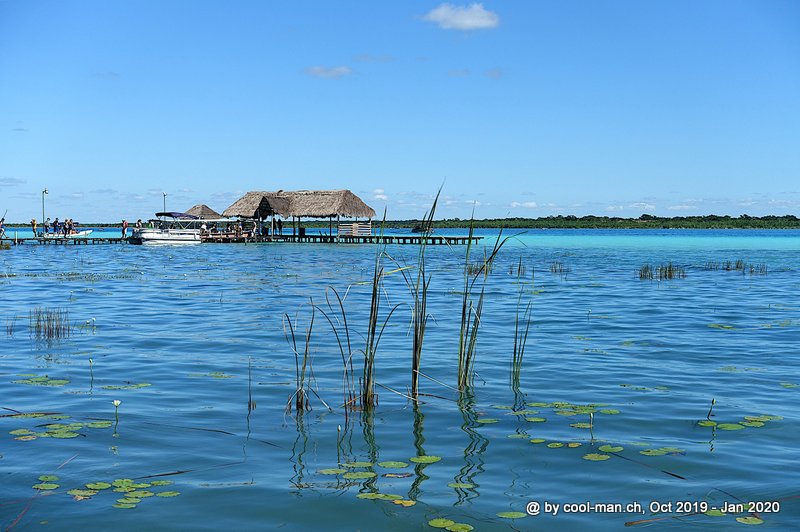
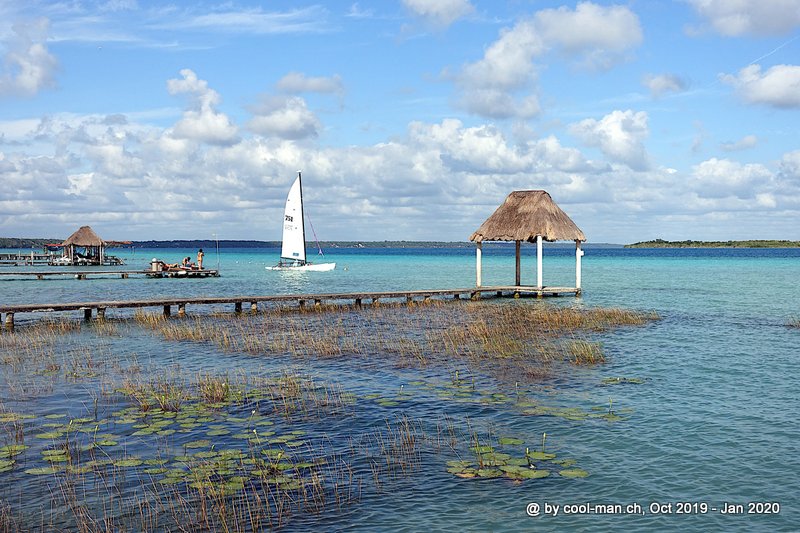
As everywhere in Mexico, the gastronomic offer was on a high level. This breakfast included a coconut muesli and an excellent coffee.
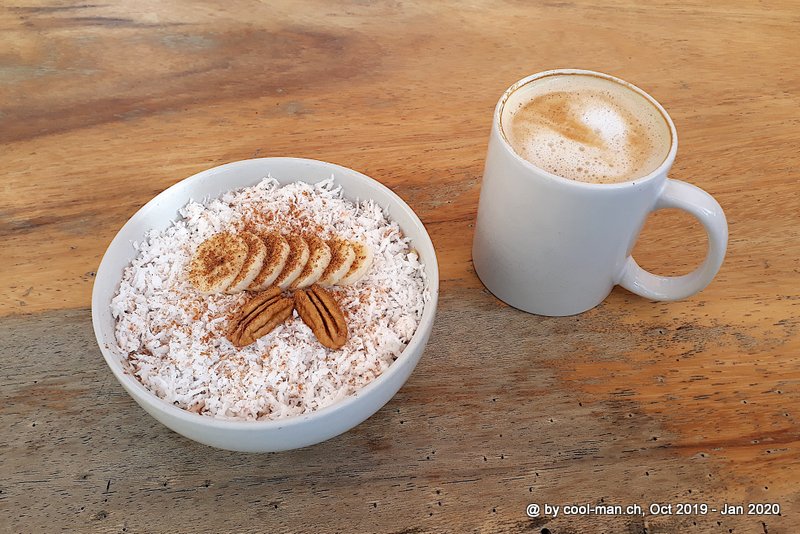
Felipe Carrillo Puerto
In the days just before New Year’s Eve, Bacalar was almost fully booked. Since I didn’t book in advance to be flexible, I would have had to spend more than USD 200 for an accommodation for the New Year’s Eve. Therefore I studied the map to find an alternative. Felipe Carillo Puerto, 116 km north, was an untouristy town where the best hotel was happy that I booked a big room for a few days for USD 30 per night until the end of the year tourist hype was over. I spent the few days mainly working on the computer.
The Christmas tree on the main square of the town
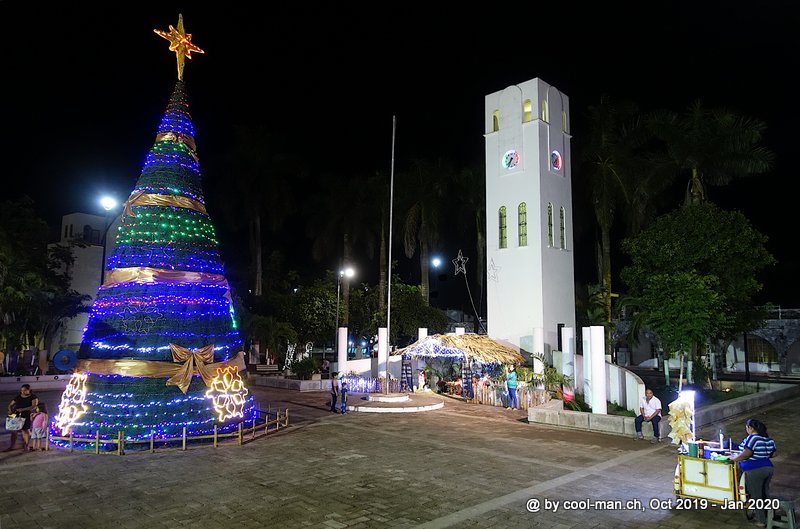
Valladolid
On 2 January many hotels were still full and it was difficult to find a good hotel in advance. Therefore I came to Valladolid without a reservation. After visiting several hotels, I found a hotel room very close to the cathedral, where I even managed to negotiate a discount, as I stayed 6 nights and paid cash.
Valladolid is a small colonial city with some attractions and also serves as a starting point for day tours to other tourist attractions. I liked the city very much.
Ek’ Balam
The next day I visited the Mayan ruins of Ek’ Balam by local collectivo, a shared taxi. The site is in the middle of the jungle. At the peak around 800 AD, about 20’000 people lived in this city.
The original stucco work is protected by newly built thatched roofs.
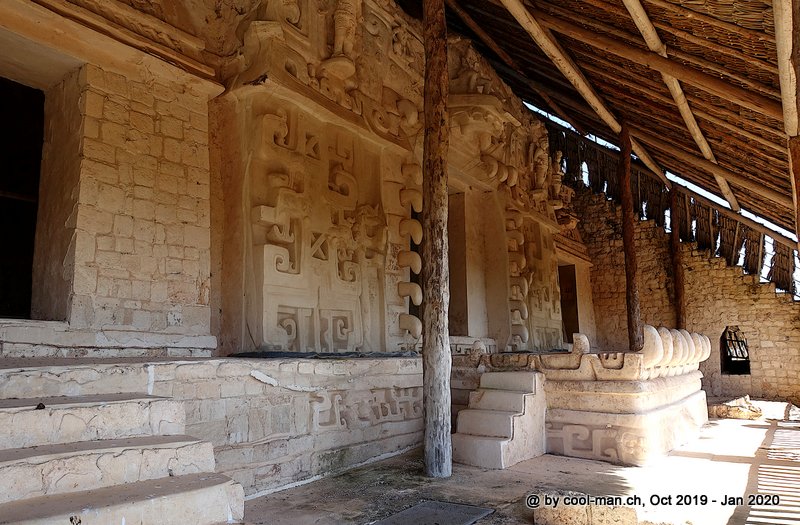
Since I wanted to go through the site with a guide without having to pay the costs alone, I asked a tourist couple if they wanted to share the guide with me. They gladly agreed. The couple came from Canada. We got along so well that I spent all days in Valladolid with Declan and Pattie.
1.5 km away from the ruins there was a water hole (Spanish cenote), which was used by the Mayas to sacrifice people. Declan, Pattie and I enjoyed the cool water.
Casa de los Venados
The Casa de los Venados (House of the Deer) is a special museum. The American couple John and Dorianne Venator bought the dilapidated house in 2000 and renovated it. Here they exhibit their collection of over 3’000 exhibits of Mexican folk art, the largest private collection of this kind in Mexico. The house is full of extraordinary objects and definitely worth a visit.
These pictures show a small part of the collection.
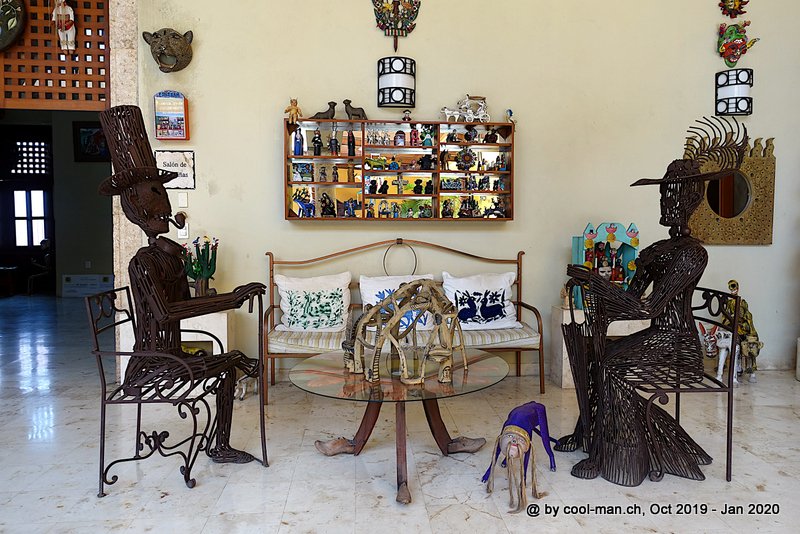

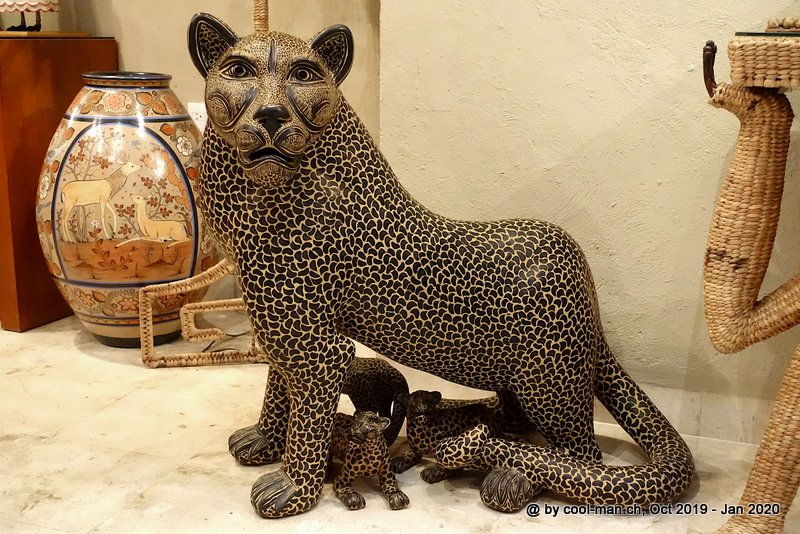
In the afternoon we visited the Textile Museum, where the guide gave a very detailed and lengthy insight into the textile culture of Mexico.
Zazil Tunich
Declan and Pattie had read about a cave cenote that was lit up in the evening and offered dinner. The family who owns the cenote picked us up in Valladolid. We were alone in the cave in the evening, so we could enjoy the beauty of this place undisturbed.
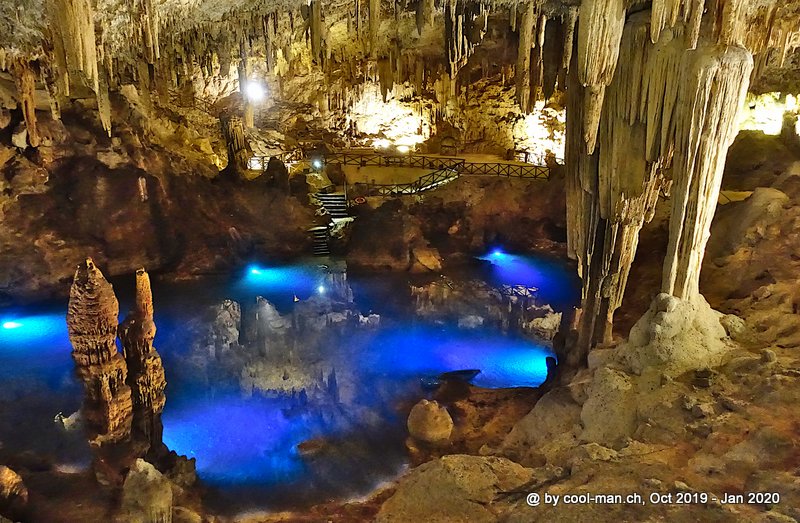
Even a Mayan ritual was held for us.
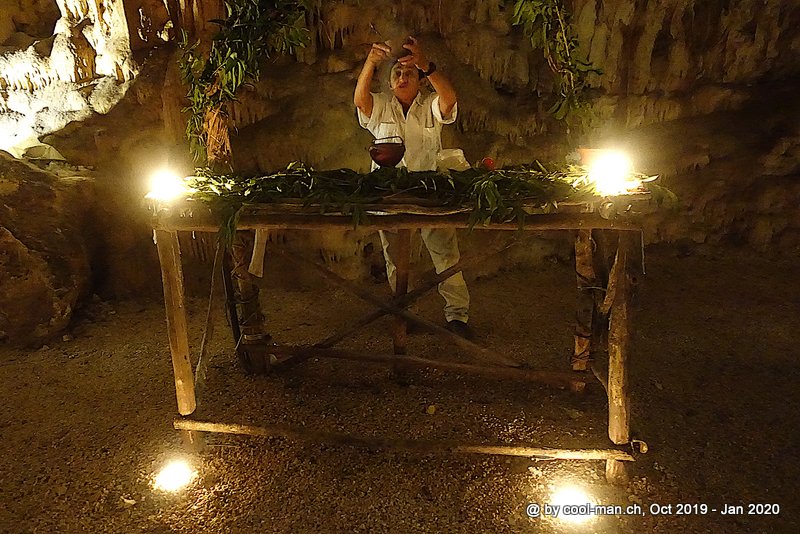
The food was traditionally prepared in a hole in the ground. Mmm, so tender… This evening was one of the highlights of my trip to Mexico.
Cenotes Oxman, X’Keken and Samula
The next day we visited the Cenotes Oxman, X’Keken and Samula.
The Cenote Oxman is located on the grounds of the Hacienda San Lorenzo Oxman, which also runs a restaurant. I was impressed by the many roots that found their way to the water.
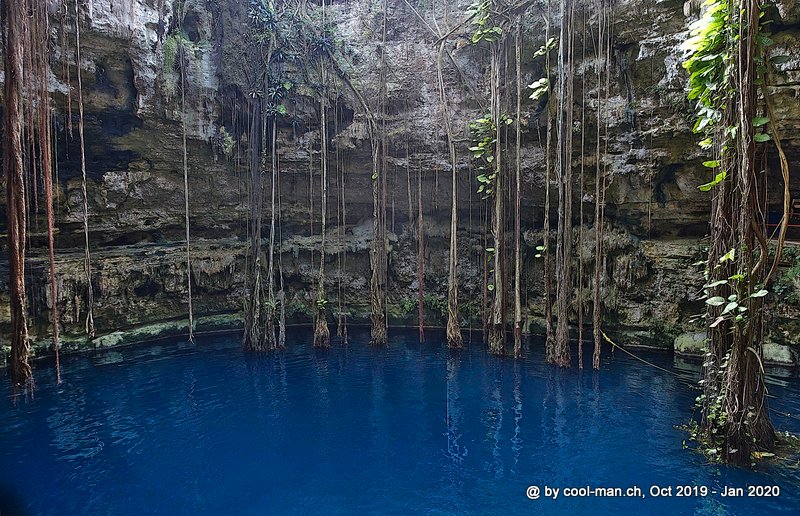
At the Cenote X’Keken, the big stalactites under which the visitors can swim stand out.
The Cenote Samula is a cave with an opening in the ceiling through which the sun shines and illuminates the water.
Cenote Zaci
The Cenote Zaci is located in the center of the city of Valladolid.
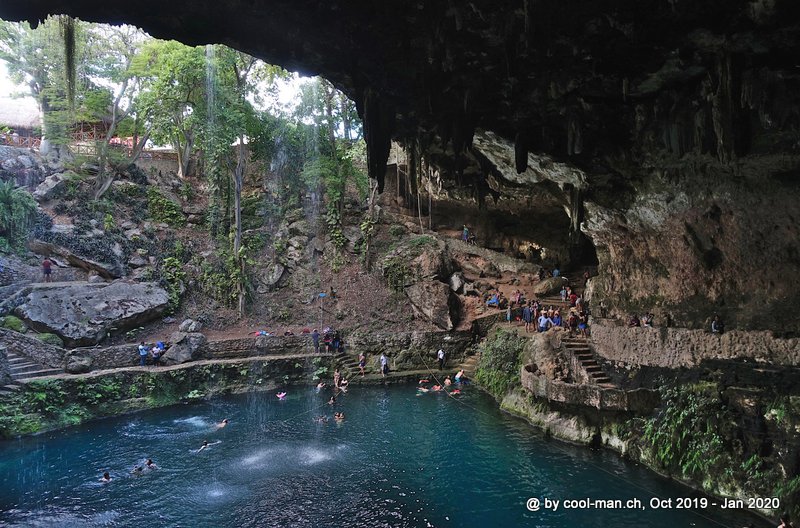
Cenote Suytun
I started the last day in Valladolid leisurely. In the afternoon I visited the Cenote Suytum, which is popular with Instagram users. The operators built a stage into the cenote, in front of which the visitors queued up for photos.

Chichén Itzá
Early the next day I set out to visit one of the tourist highlights of every Yucatan trip, the Mayan site of Chichén Itzá, 42 km from Valladolid. Although I took the first bus from Valladolid, I waited 45 minutes in a long queue to buy the ticket. On the large area the visitors spread out well and with a little patience before the rush of the many tour buses I got some good pictures from which I only had to remove a few tourists.
Chichén Itzá is one of the most visited archaeological sites in Mexico and a UNESCO world heritage site. At its peak between 600 and 1000 AD it was an important Mayan city with many different architectural styles reflecting the multicultural population. There are four cenotes around Chichén Itzá. In the most famous, the ‘Cenote Sagrado’, human sacrifices were made to the rain god.
The 30 meter high pyramid ‘El Castillo’ is the landmark of Chichén Itzá
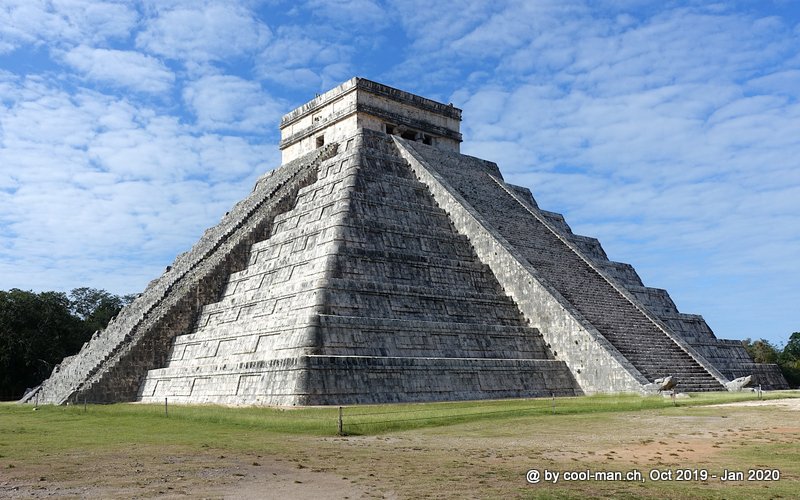
Columns in the ‘Temple of a Thousand Warriors’.
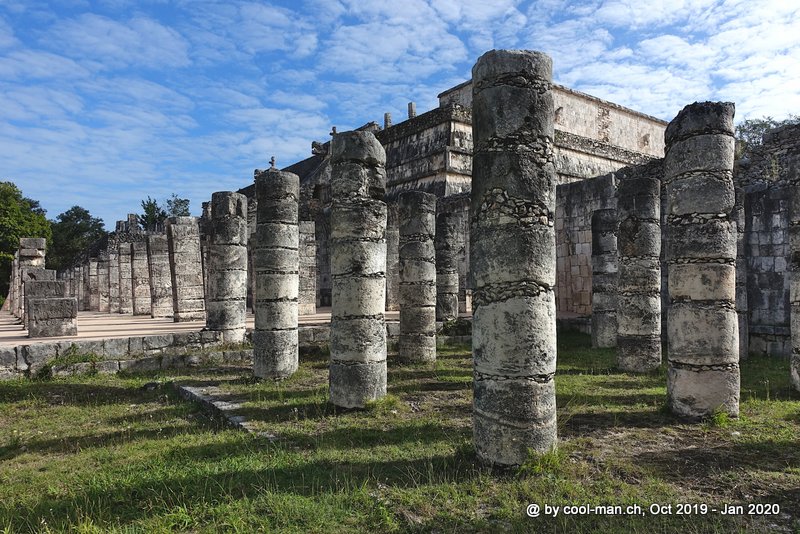
The ‘Casa de la Monjas’ (house of the nuns) is one of the oldest buildings
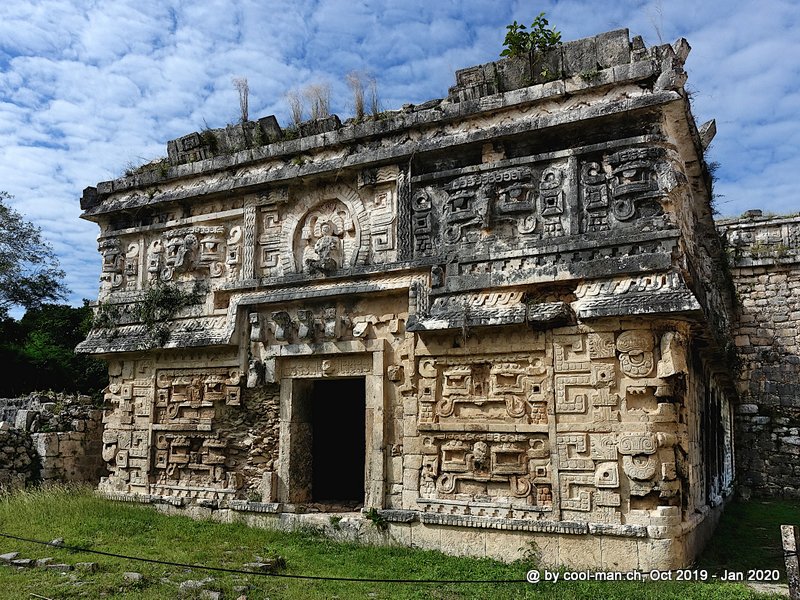
Many buildings and stone works are in good condition
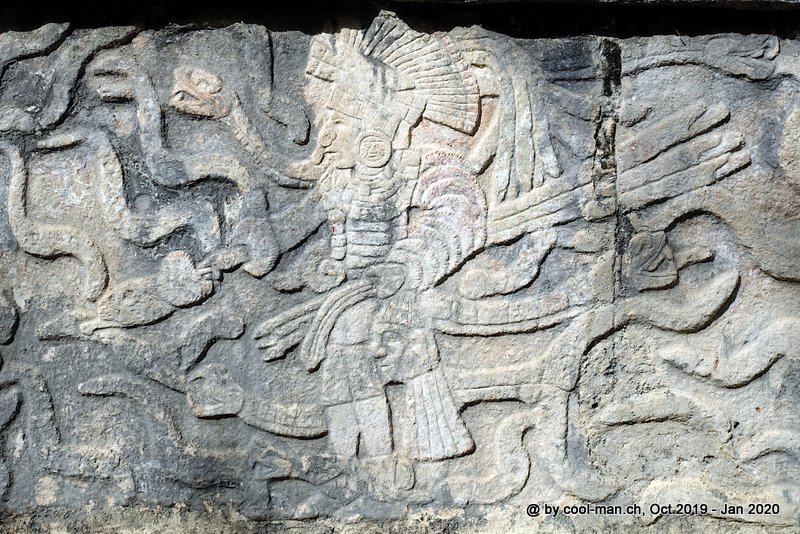
Mérida
The next day I went by bus to the city of Mérida, 160 km east of Valladolid. It is a bigger city than Valladolid with more activities, a well organized tourist information and informative city tours.
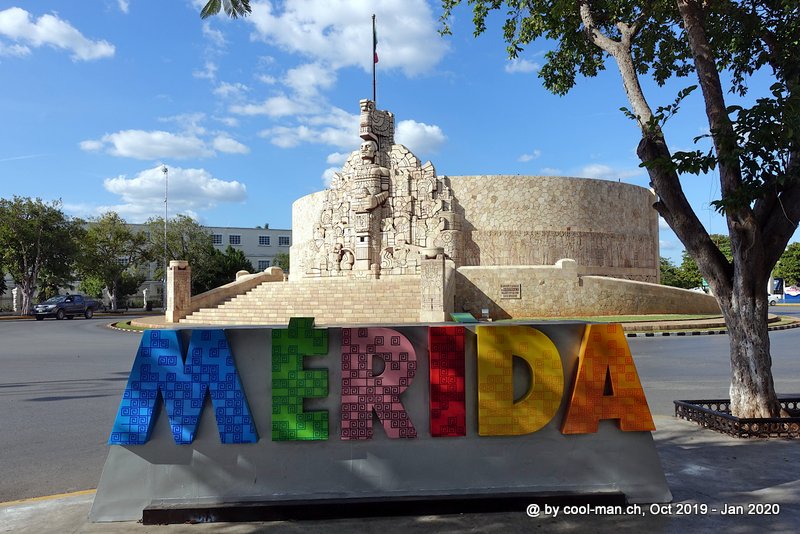
Every evening, a video projection took place on a historical building, which brought the history of Mérida to life. I was lucky that at the time of my visit there was the Mérida Festival, where music bands played and folkloric performances were held in different places in the city in the evenings.
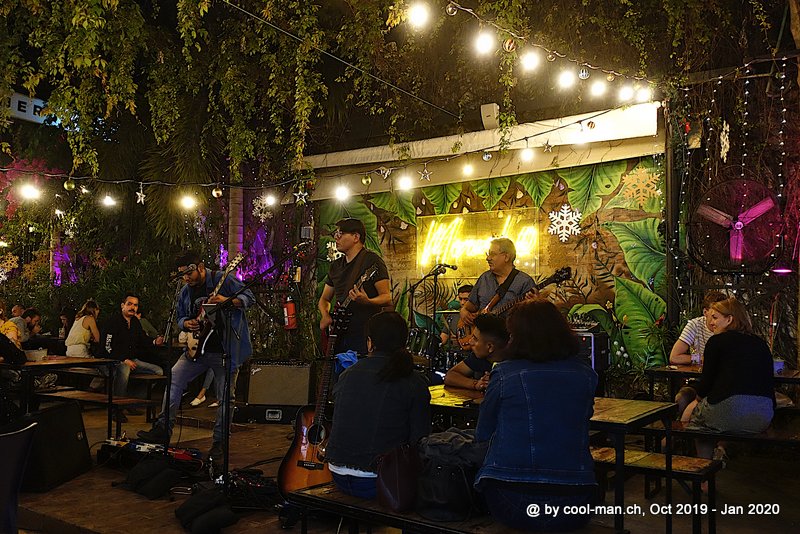
I was especially impressed by a band that played their songs hanging on ropes high above the heads of the audience.
The city has an old town, but in the north of the city there is also a wide avenue, the ‘Pasejo Montejo’, with modern elegant hotels, restaurants, museums and shopping centers.
Izamal
From Mérida I made a day trip to Izamal, 67 km away, whose houses are all painted yellow.
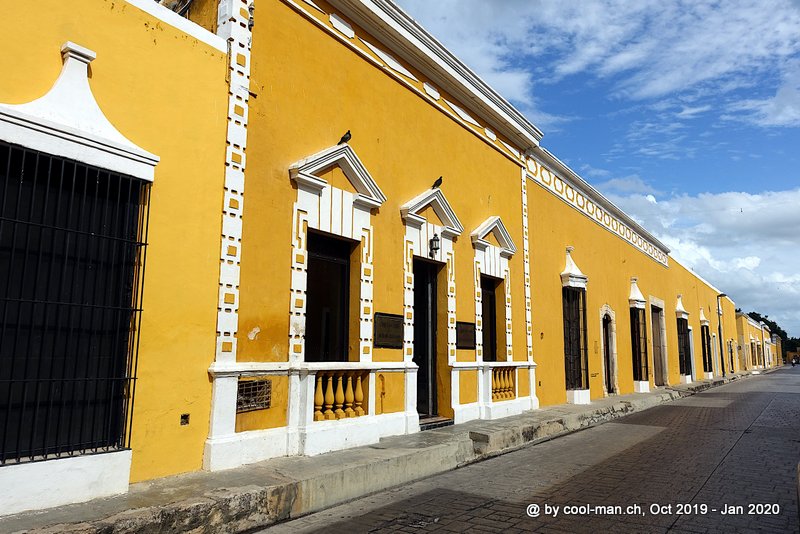
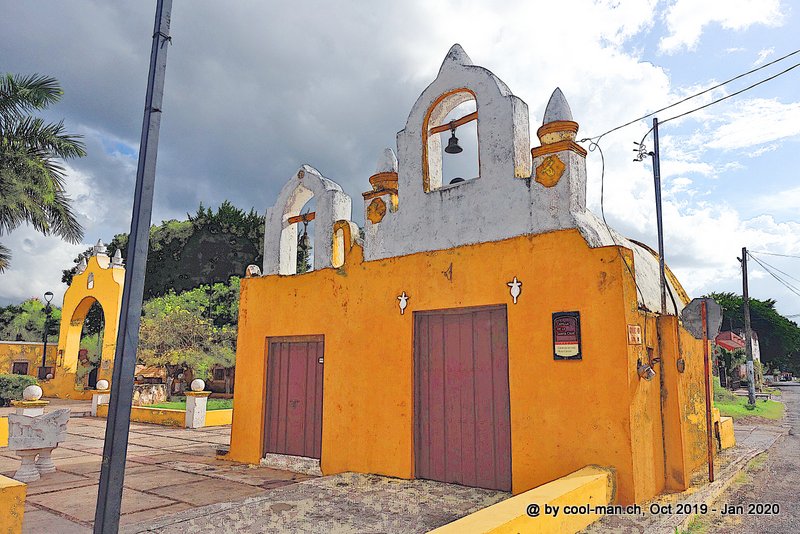
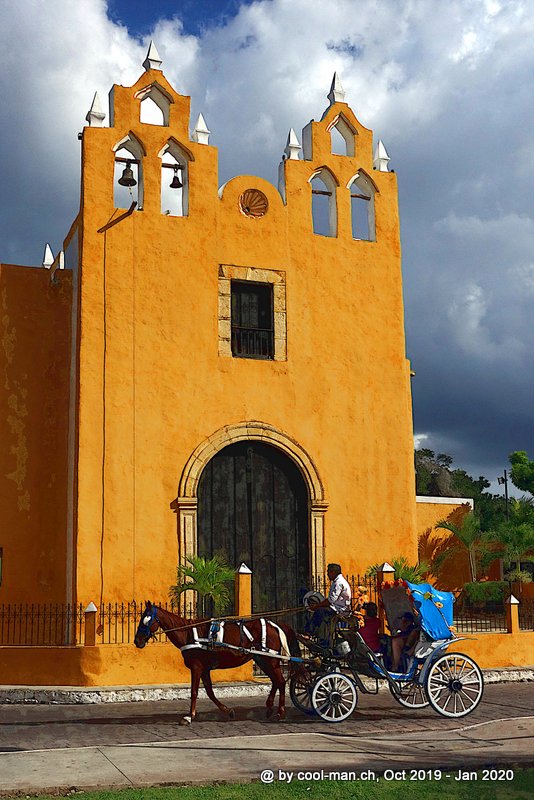
In Mayan times it was one of the largest cities in Yucatan and an important pilgrimage center. As usual, the Spanish built their city over the former Mayan city, but in Izamal the Mayan temples were so large that they could not be destroyed and can still be seen today.
Kinich-Kakmó is the largest of the three preserved Mayan pyramids in Izamal, with a height of 34 meters
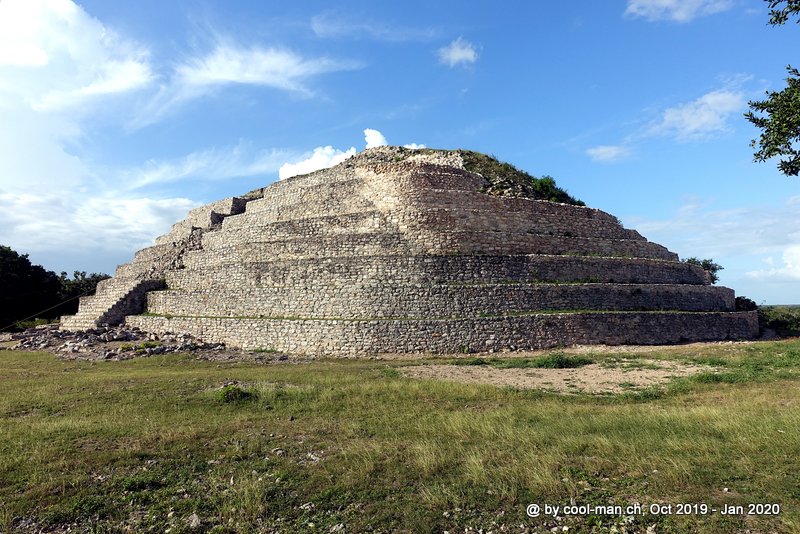
Impressive is the colonial Franciscan monastery ‘San Antonio de Padua’, which was built over a huge Mayan acropolis and has the second largest atrium after the Vatican. It was completed in 1561.

In the local museum
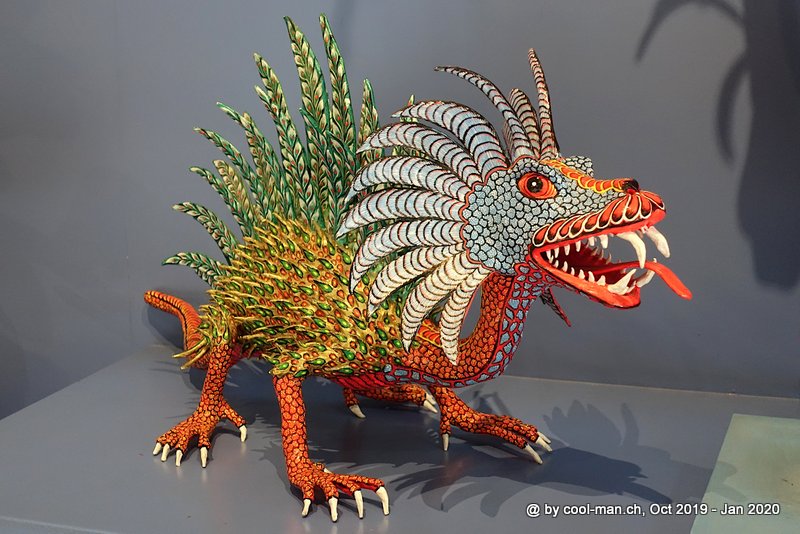
Izamal is a place of pilgrimage again today. Now Christians come to adore the statue of the ‘Virgin of the Immaculate Conception’, which Pope John Paul II gave to the city during his visit in 1993.
Uxmal
The next day I visited the Mayan ruins of Uxmal, 78 km south of Mérida. It is one of the best restored archaeological sites in Yucatan and a UNESCO world heritage site. The site consists of several mighty and impressive buildings.
Right at the entrance you will find the over 30 meter high pyramid ‘Piramid del Mago’ (Pyramid of the Magician).
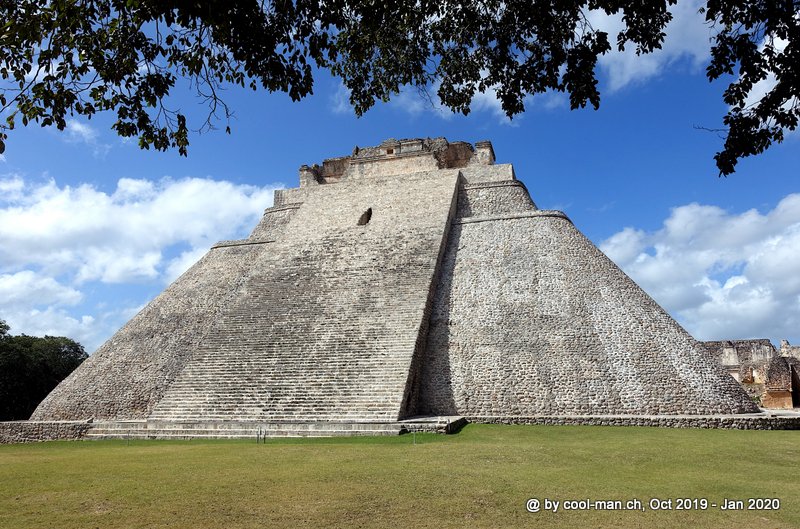
The most striking single structure is the Governor’s Palace, which towers above everything.
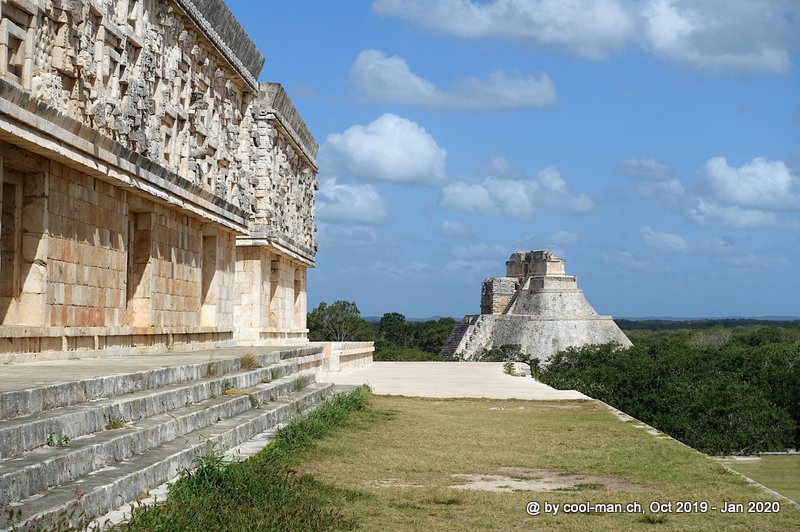
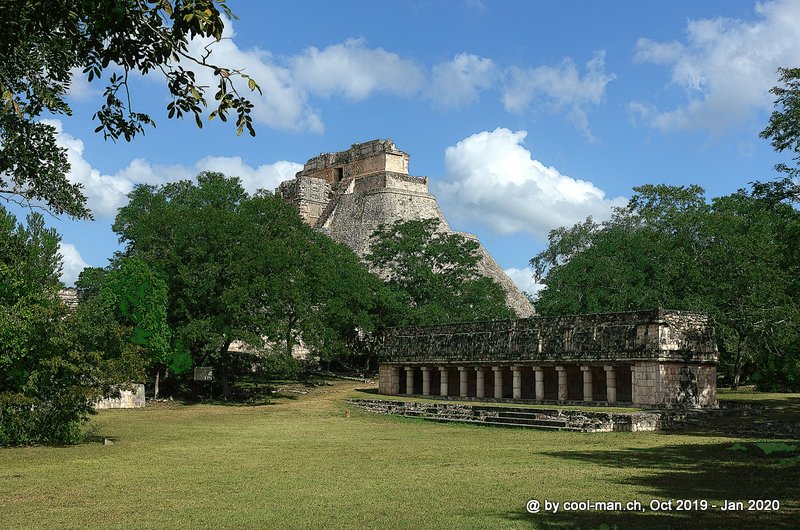
Examples of stone work
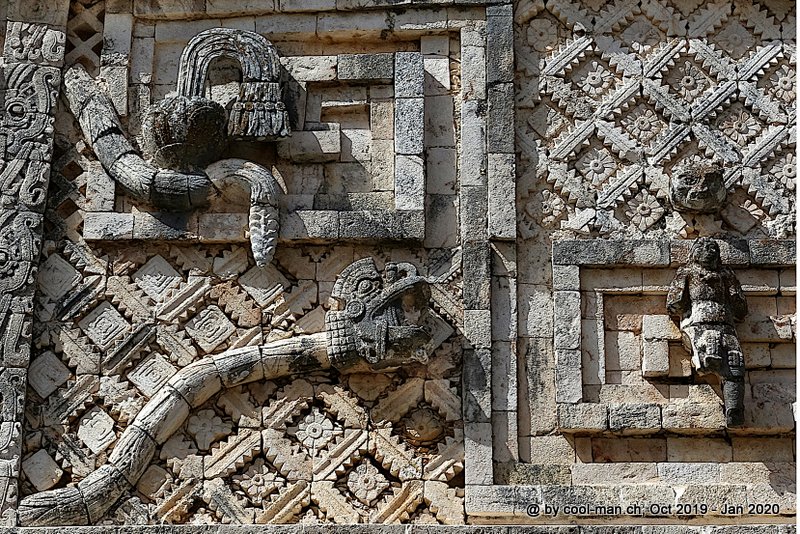
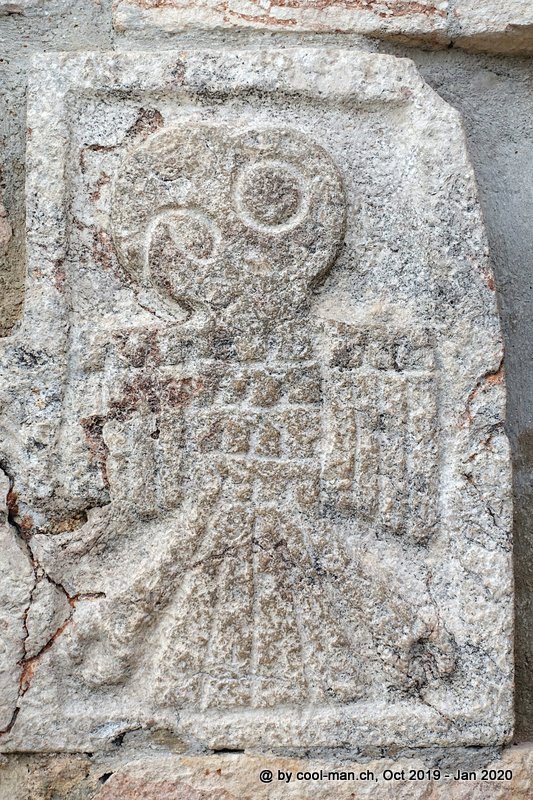
Campeche
I continued by bus to the 184 km southwest located coastal town of Campeche, another colonial town in Yucatan, which is worth seeing with its old town, which is listed as a UNESCO world heritage site, but also serves as a starting point for day trips to other sights. Campeche was also built on the site of a Mayan city and was the main port of the Yucatan peninsula during the colonial period.
The center of Campeche
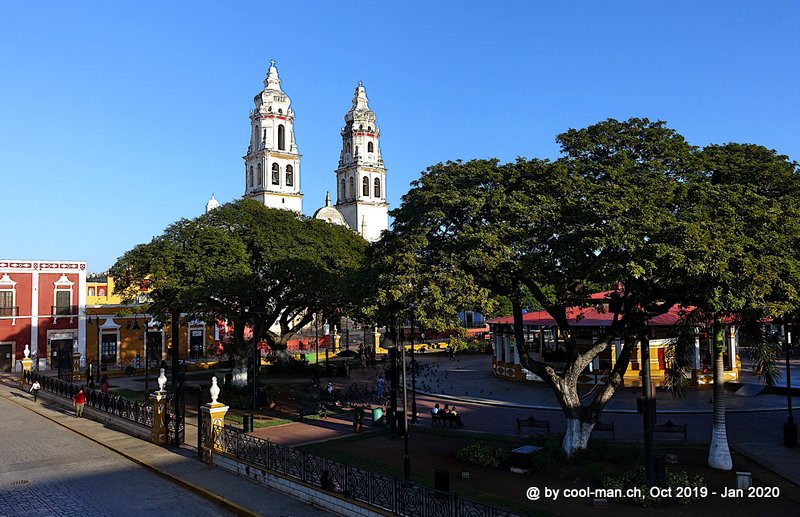
and the Cathedral of ”Our Lady of the Immaculate Conception”
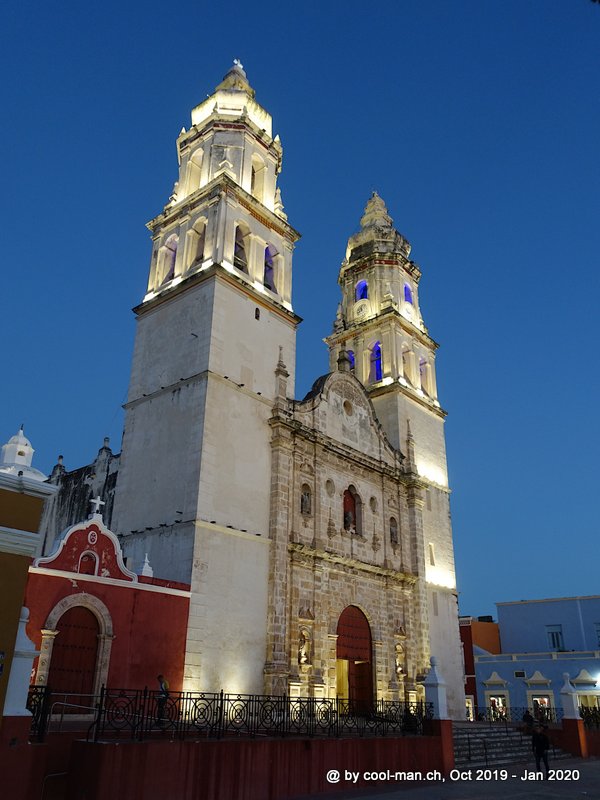
I wonder what the pirate figures at the police station in Campeche mean? Do the police officers sympathize with criminals and outlaws?
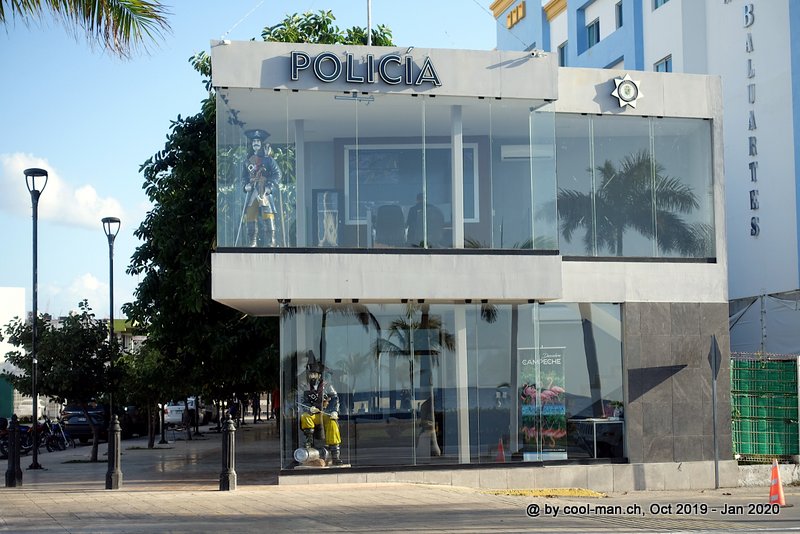
Every evening impressive water shows took place on the promenade by the sea.
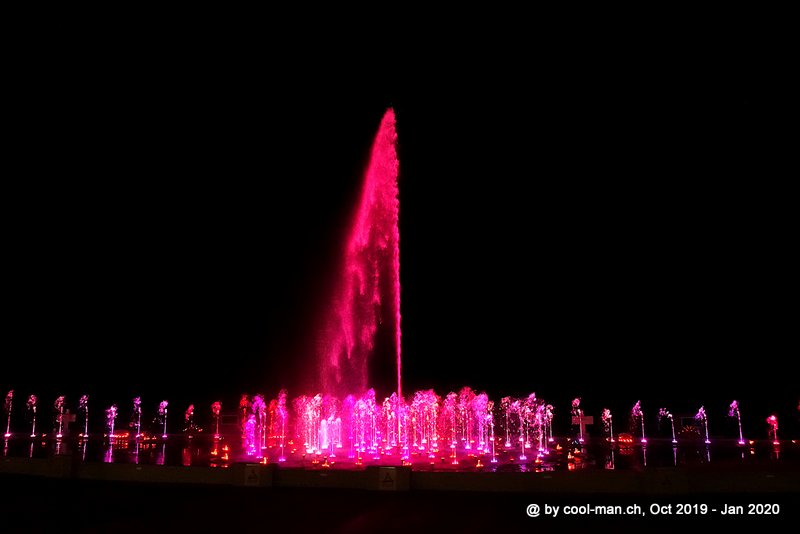
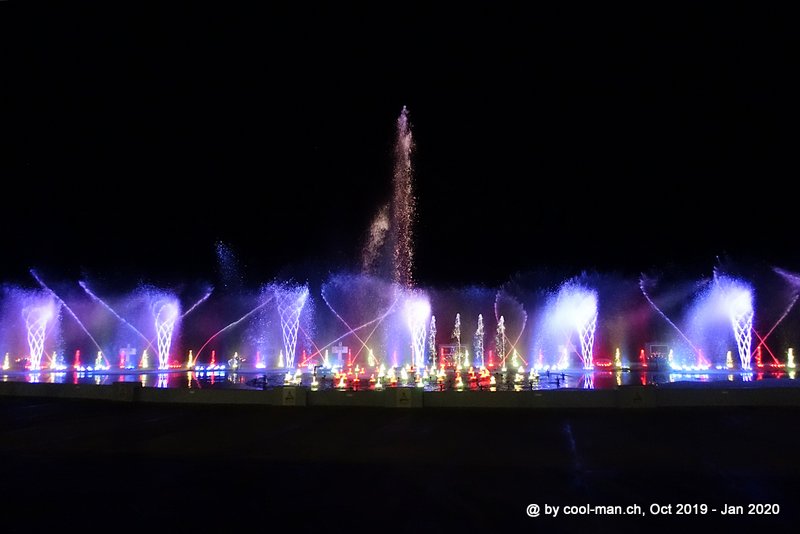
Many restaurants and bars served dinner under the open sky.
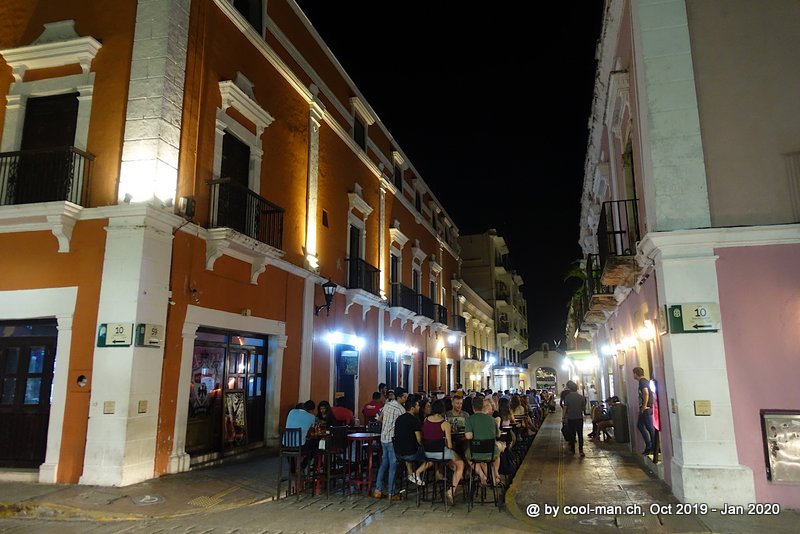
Edzna
A highlight of my Mexico trip was the visit of the Mayan site of Edzna, 50 km away from Campeche. The place was permanently inhabited from 400 BC to 1500 AD and was not rediscovered until 1907.
I visited the site on an afternoon when the sun illuminated the main temple perfectly. When I arrived, there were still a few people on the extensive grounds. From three o’clock until the departure of the last collective taxi at five o’clock I had the whole complex to myself. It was a sublime feeling to be able to enjoy this impressive place without any sound or other distraction.
I enjoyed the impressive ruins of Edzna alone.
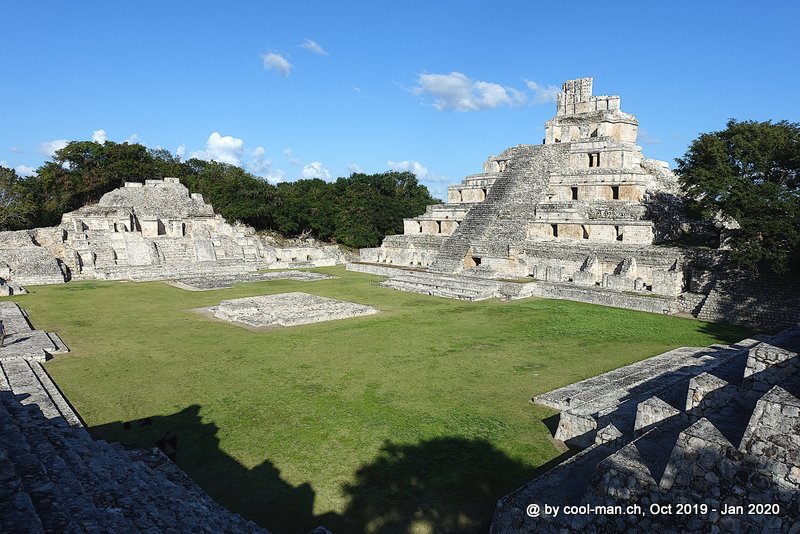
Rio Lagartos
On my way back towards Cancun I stopped in Rio Lagartos, which I reached via Mérida. The lagoons around the small coastal town are a protected area, which has been declared ‘Biosphere Reserve Ría Lagartos’ by UNESCO. It is home to the largest population of the American flamingo in Mexico, but many other birds and aquatic animals can also be found here.
American Flamingos
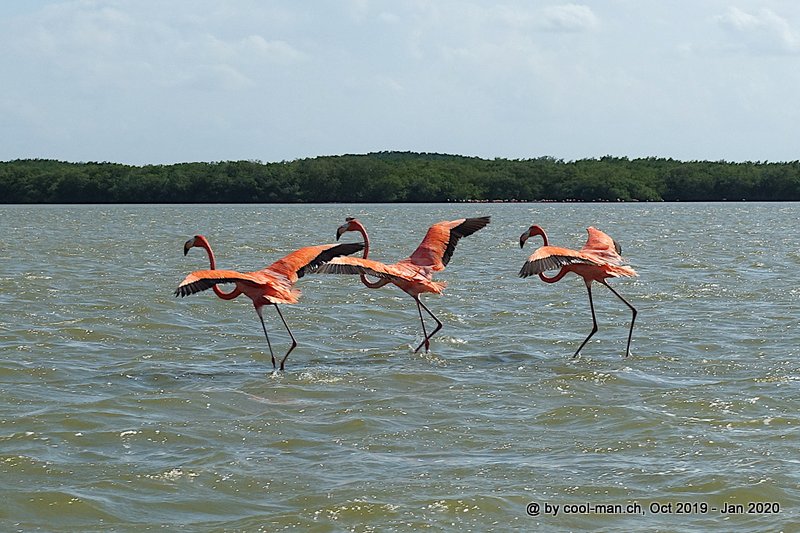
Sunset with flamingos
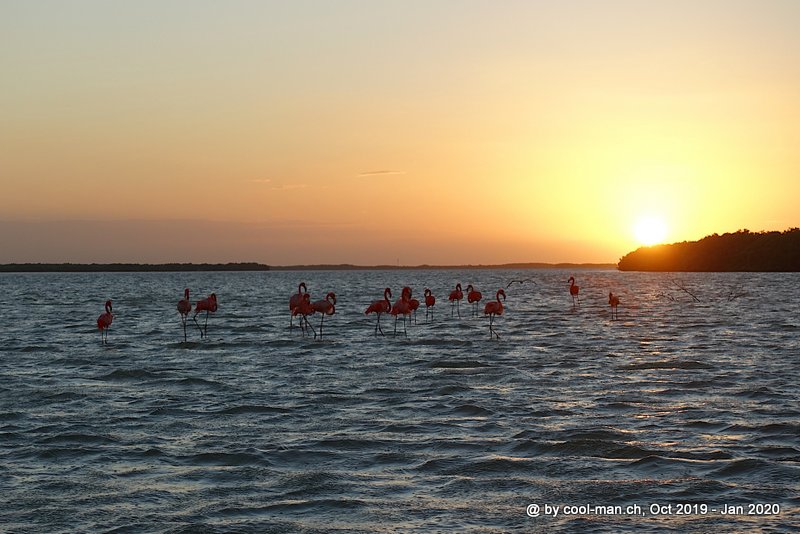
Las Coloradas
40 km away from Rio Lagartos, there is another place of interest, the place ‘Las Coloradas’. Already the Mayas produced salt with the help of the inflowing salt water in the depressions behind the mangroves by letting the water evaporate in the basins. Today the salt production is operated commercially with enlarged basins. The red color of the water comes from algae, plankton and brine shrimps living in the water, which are also responsible for the red color of the flamingos.
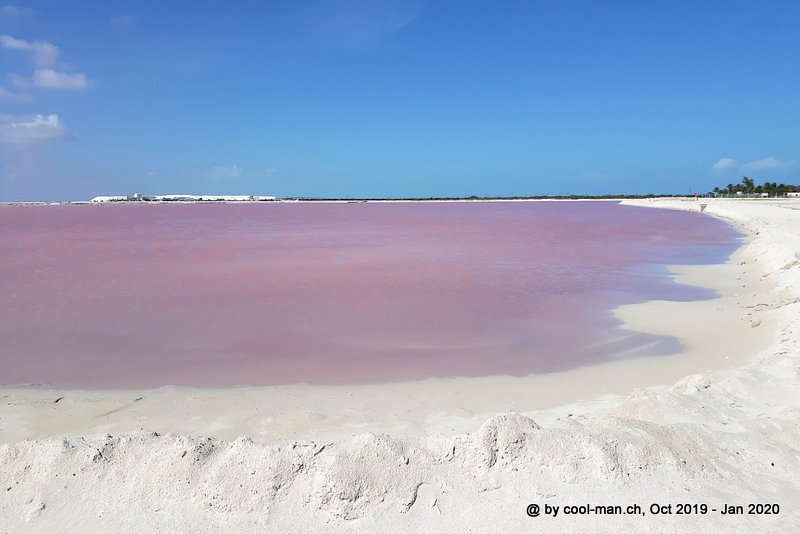
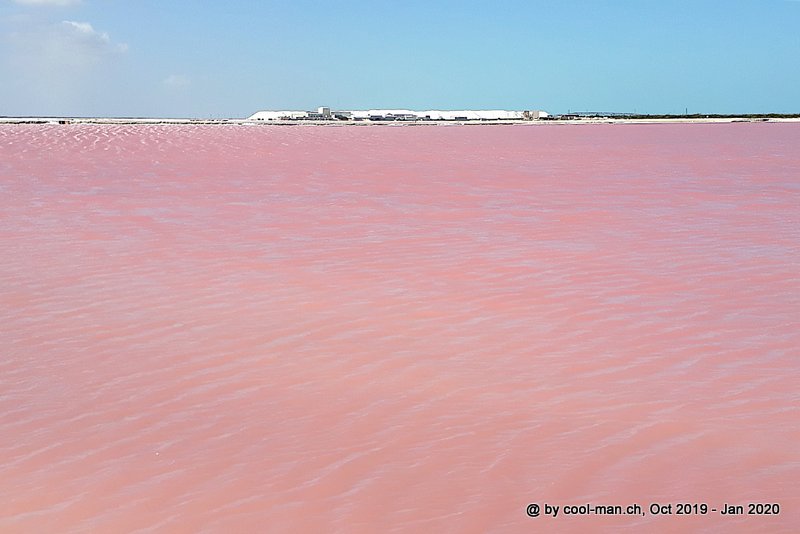
Island Holbox
In Rio Lagartos I met a woman with her daughter, who also wanted to travel to the island of Holbox, 170 km away, so we took a taxi to the coastal village of Chiquilá, from where the ferry goes to the island of Holbox, 11 km away.
Hardly visited 10 years ago , there are now many hotels and restaurants in the small village on the island and petrol-operated golf cars pollute the pure island air a little. Nevertheless, the little town and the island has kept its charm. As usual in Yucatan I found some very good restaurants. Those who feel like it can have long walks along the coast or on sandbanks.
Many pelicans live around and on the island
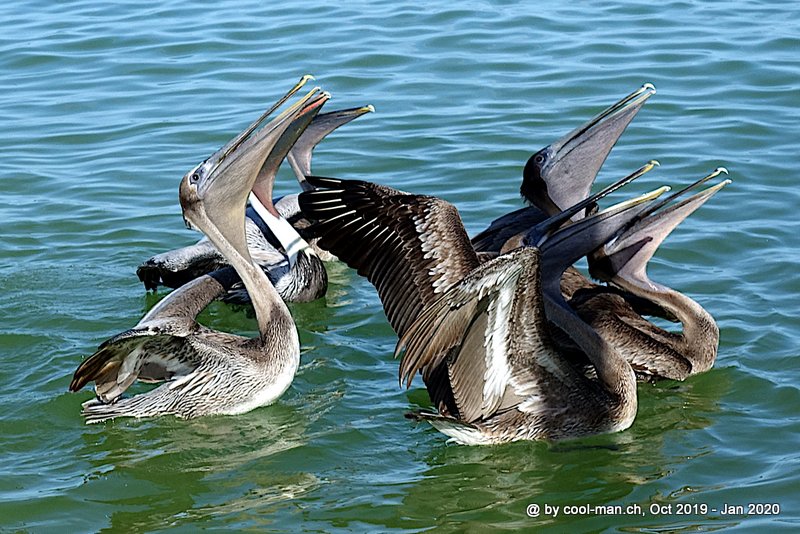
The coastal waters are inhabited by Atlantic Horseshoe Crabs, whose eggs are an important food source for coastal birds. The photo shows a dead crab washed ashore.
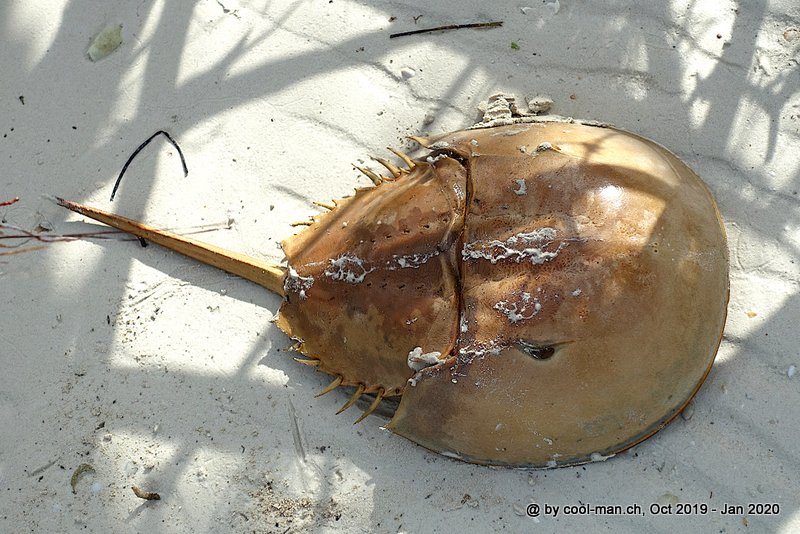
Island life on Holbox
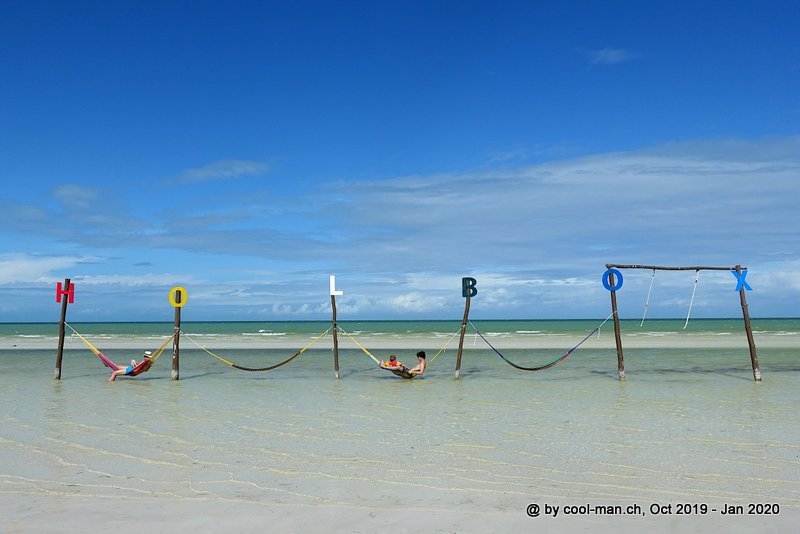
Isla Mujeres
The last destination on my trip to Mexico was the island Mujeres (women), which is located off the city of Cancun.
Only the northern part of the 7 km long island has a several hundred meters long sandy beach. Therefore mass tourism is concentrated in this area. This is why I appreciated even more that I had booked a hotel in the quiet southern part, which also offered some high class restaurants.
Nevertheless, also the south was not the perfect holiday paradise. One day, I could smell the nearby landfill and the neighbored properties of beautiful houses were covered with building rubble.
But I found places worth visiting, so that the island Mujeres was a worthy end of my Mexico trip.
On the island there is even a small brewery ‘Isla brewing company’. There are no guided tours, but the many excellent beers can be tasted in the shop. I liked the beers so much that I bought some bottles and brought them to Switzerland. I especially liked the beers Rubia Ale, American Pale Ale, India Pale Ale, the dark Ron Y Vanilla Porter and the Ginger beer ‘Cerveza de Jengibre’.
On the roof of my hotel
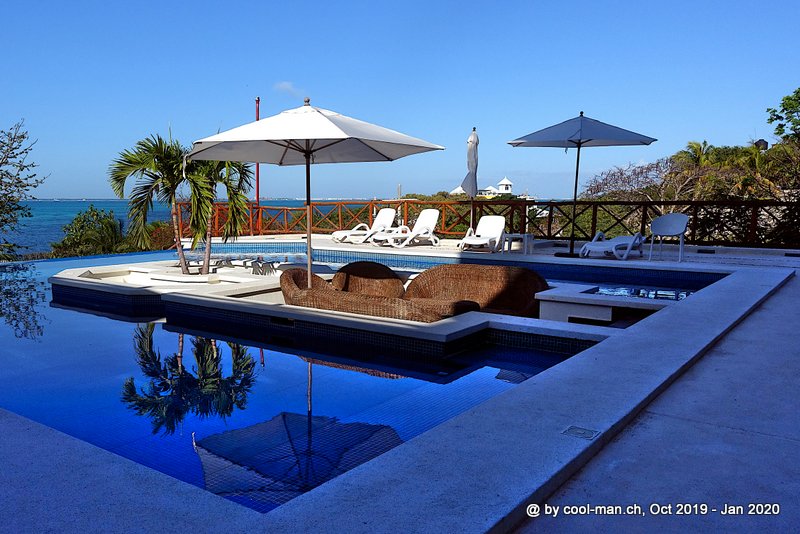
Only a few meters from the hotel there was a restaurant with its own jetty from where I went swimming and enjoyed the sunsets. On the horizon you can see the city of Cancun.
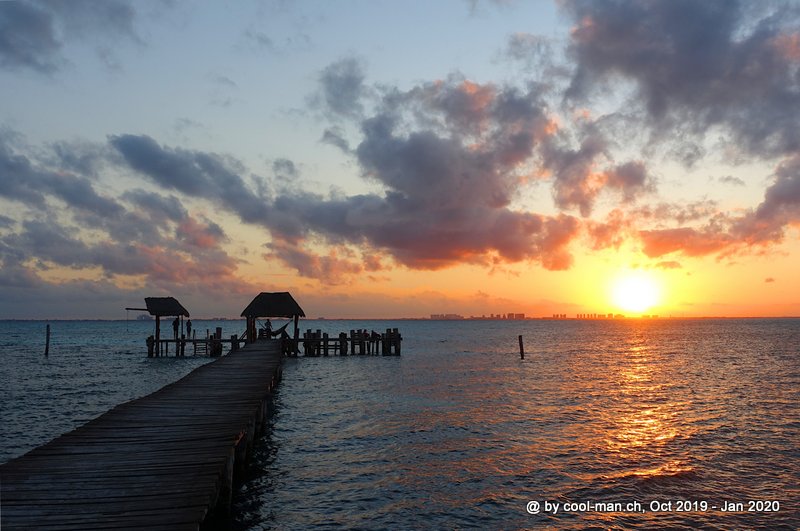
I could even snorkel. But the two pictures show almost all the fish I encountered.
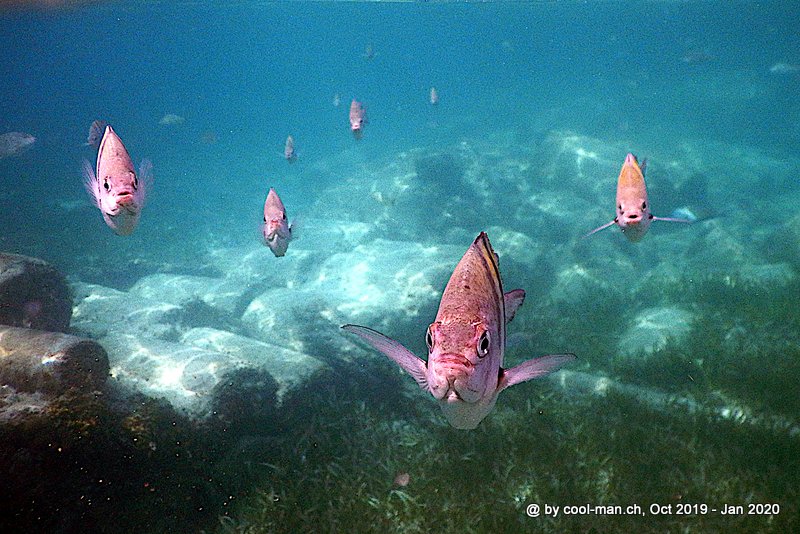
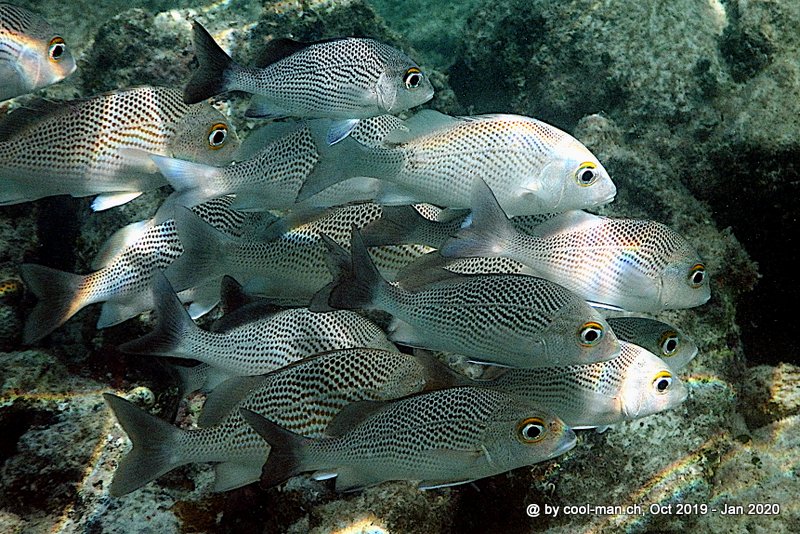
The fish restaurant Marbella became my favorite restaurant. I always chose oysters as a starter.

Here octopus with tuna
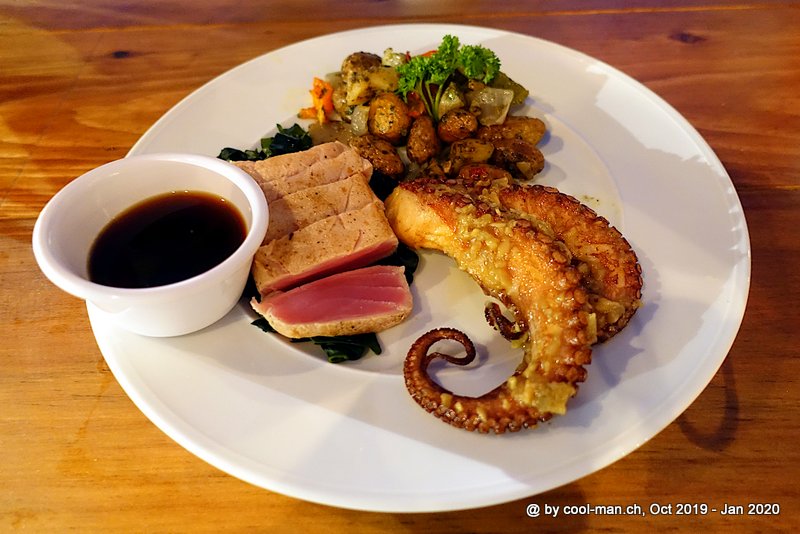
Last impressions

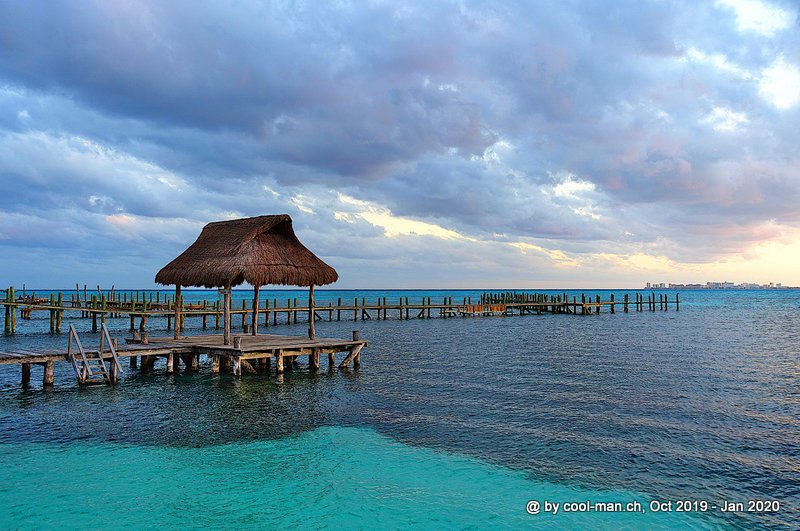
I really liked the Yucatan peninsula, but also Mexico City. On the one hand there were many historical sites to visit, on the other hand the standard of the tourist infrastructure was on a high level and that at a good price/performance ratio. I also appreciated the excellent restaurants. I am planning to travel to Mexico again soon.
After a week in Switzerland I visited the Baa Atoll in the Maldives.
This text is an automatic English translation from the German original by deepl.com